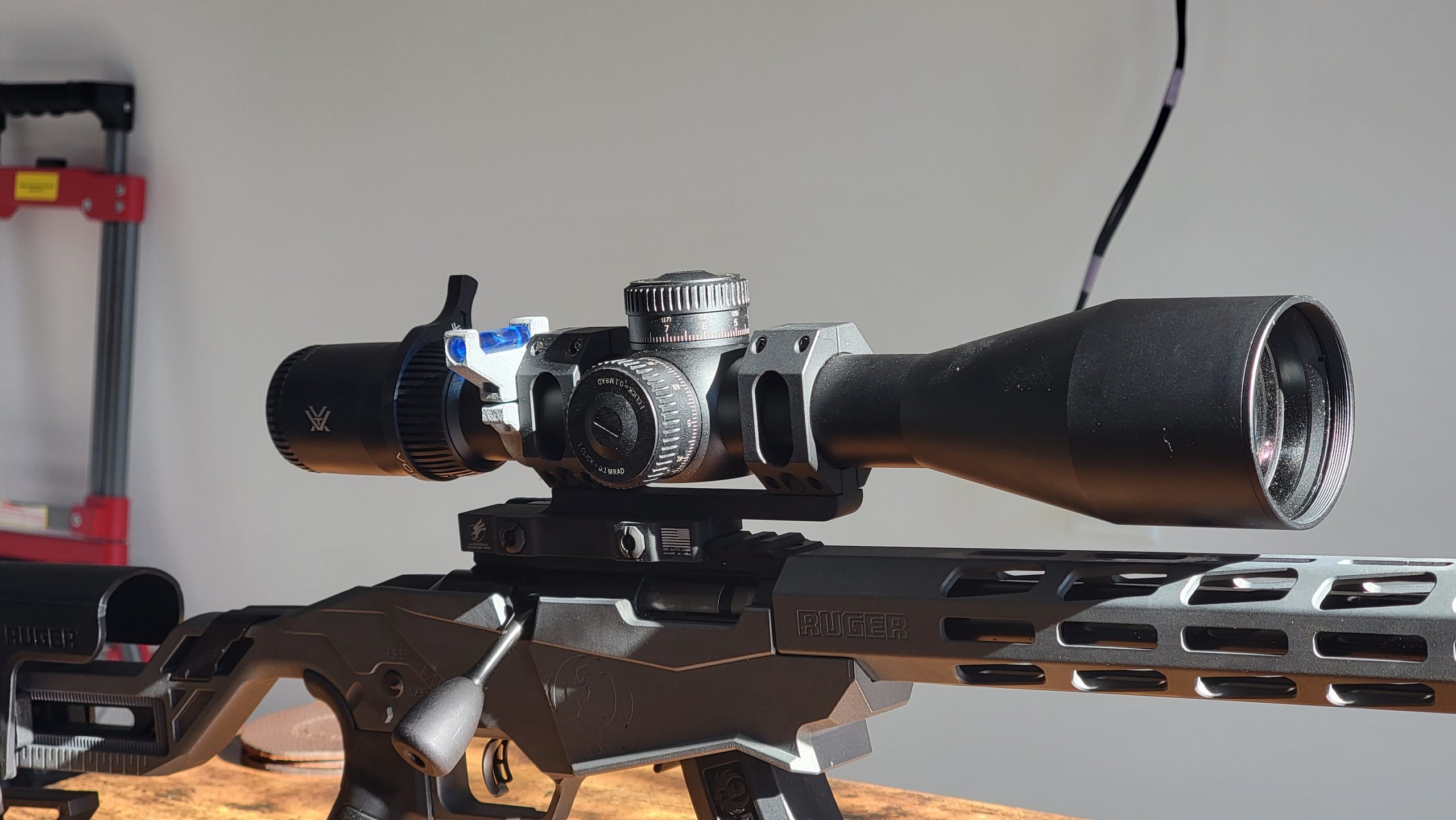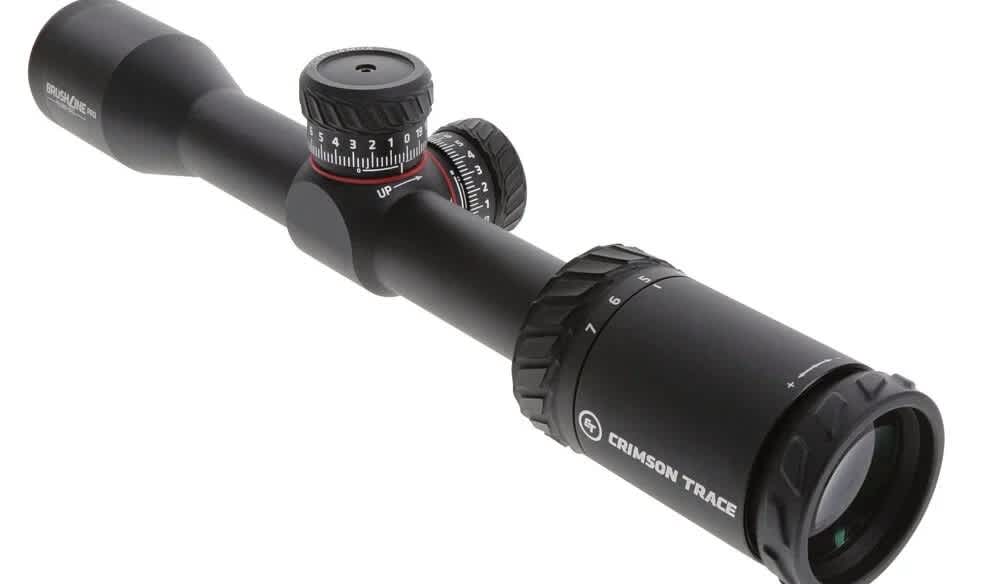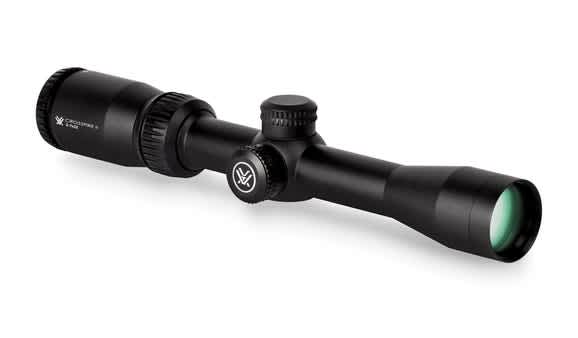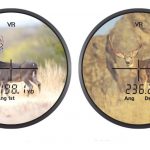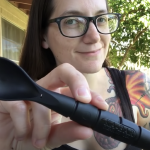Aim Small Miss Small: The Best Rimfire Scopes for 2022
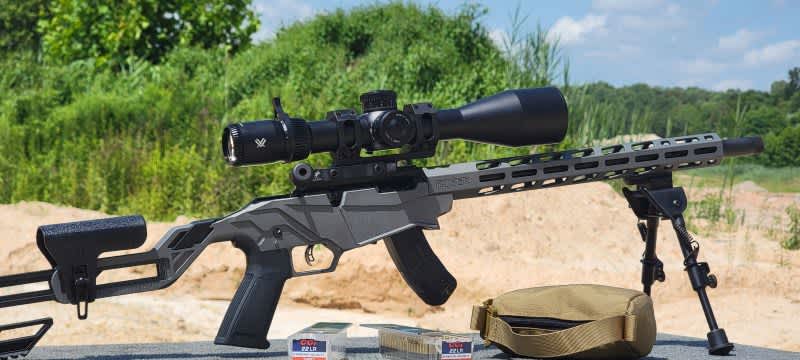
1. Crimson Trace CT Brushline Pro 2-7x32 BDC-Rimfire
This scope from Crimson Trace is in my opinion, one of the best pieces of glass you can get for any rimfire rifle when it comes to dedicated rimfire scopes. The reticle is extremely crisp and clean and the adjustment knobs are fine enough to do decent work at 22LR ranges and in. The 2-7 magnification range is also extremely appropriate for the ranges that 22LR excels at. I’ve personally tested this exact model of Brushline Pro extensively and I have found the BDC-Rimfire reticle to be very accurate when using standard velocity 36-grain 22lr.
2. Leupold VX-Freedom Rimfire 3-9x40
Leupold VX-Freedom riflescopes are budget-friendly yet reliable scopes hunters will enjoy. Delivering the legendary Leupold performance, VX-Freedom scopes are what hunters have been demanding for decades. With a host of new and improved features, the VX-Freedom is guaranteed to get the job done every time. One feature, in particular, that is useful is the Twilight Light Management System. This system provides less glare, higher contrast, and higher overall performance during those dwindling hours of daylight for shooters and hunters alike.
3. Vortex Crossfire II 2-7×32 V-Plex Rimfire Reticle
If you’re on a budget Vortex’s Crossfire II lineup is a great place to go if you’re looking to hunt down those pesky squirrels. The Longer eye relief, fast-focus eyepiece, fully multi-coated lenses, and improved, resettable MOA turrets ensure optimal performance in the field. The hard anodized one-piece aircraft-grade aluminum tube is nitrogen purged and o-ring sealed for a lifetime of waterproof/fogproof performance. This crossfire features Vortex’s V-Plex Reticle (MOA): a popular all-purpose hunting reticle intended for a wide variety of hunting applications specifically designed with rimfire in mind
4. Bushnell 613510A Rimfire Optics Scope with Multi-X Reticle, 3.5-10 x 36mm
Bushnell’s Rimfire optics Series delivers peak performance specifically for rimfire rifles. This family features rimfire-specific scopes with adjustable objectives for precision shot placement on small distant targets. A caliber-specific 613510A model is calibrated for the hot new 17 WSM cartridge, while a bullet drop compensating turret system makes the 3.5-10X 36mm 613510A perfect for long-distance varmints.
5. Maven CRS.1 3-12X40 SFP
If you’re looking for something that will cover all of your bases and you don’t mind re-zeroing your optics from time to time, then the new Maven CRS.1 3-12×40 SFP riflescope is the way to go. Featuring their award-winning C Series glass, the second focal plane CRS.1 offers an exceptionally clear, bright, and high contrast image with excellent color fidelity. Due to the popularity of Maven’s proprietary RS Series reticle options, the company tailor-fit the CRS Series with a unique version of the Simplified Holdover Reticle (SHR) to create the CSHR in 0.25 MOA/click units – making holdovers simple, easy, and quick. With a lightweight 14.18 oz. footprint and a streamlined profile, the CRS.1 covers all the bases for most hunting situations.
What is parallax and why is it important?
Scope parallax is an inconsistency in the view that you see when you look down the rifle scope. It causes the crosshair to move across the target when you shift your eye position. This means the reticule will not accurately reflect where your rifle is pointing. This is only a problem in higher magnification scopes and is much more noticeable the higher the magnification.
Since the amount of parallax within the scope is variable depending on the distance of the target to the shooter, it’s important to ensure that you’re always compensating and adjusting for parallax.
What does Subtensions mean?
My optic lets me see colors on things that don't have those colors. What does that mean?
What you’re experiencing when you’re looking through your optic and you see red, and green colors near the edges of objects is called chromatic aberration. This effect happens when light rays passing through a lens focus at different points, depending on their wavelength. There are two types of chromatic aberration: axial chromatic aberration and lateral chromatic aberration.
Typically this isn’t a problem when you are target shooting or hunting small game but it can be annoying so its a good idea to see if your specific optic you’re planning on buying produces a significant amount of it and whether or not that is a non-seller for you.
We are committed to finding, researching, and recommending the best products. We earn commissions from purchases you make using the retail links in our product reviews. Learn more about how this works.

